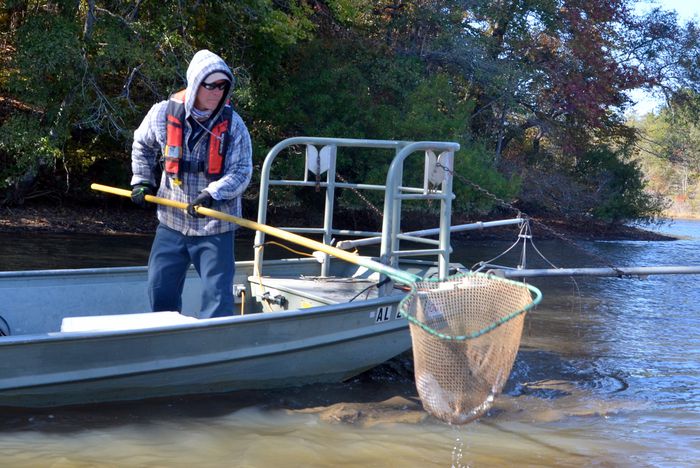By Dennis Pillion.
It’s 40 degrees on a Wednesday morning in Eufaula and White Oak Creek is quiet except for the puttering of a diesel generator and a faint wee-oh, wee-oh sound reminiscent of a European ambulance siren.
That high-pitched sound means the two squid-like collections of wires dangling into the water are pulsing out electricity out into the water, around the dock posts and sunken trees where the fish like to hide.
The jolt will stun the fish for a few minutes, long enough for Alabama environmental authorities to collect them, analyze the results and let us know whether they’re safe to eat.
The fish are sent to an ADEM lab for processing. Lab techs will fillet the fish, using one fillet from each fish for analysis and freezing the other, in case it’s needed for additional testing. ADEM will test each fish for several contaminants including mercury, polychlorinated biphenyls (PCBs), and PFOS.
The results from that sampling will go to the Department of Public Health, where toxicologist Dr. John Guarisco will analyze the results and publish the advisories.
READ MORE at al.com

